He’s covered in a beautiful shade of indigo blue, but only at certain times of the year!
Meet The Indigo Bunting
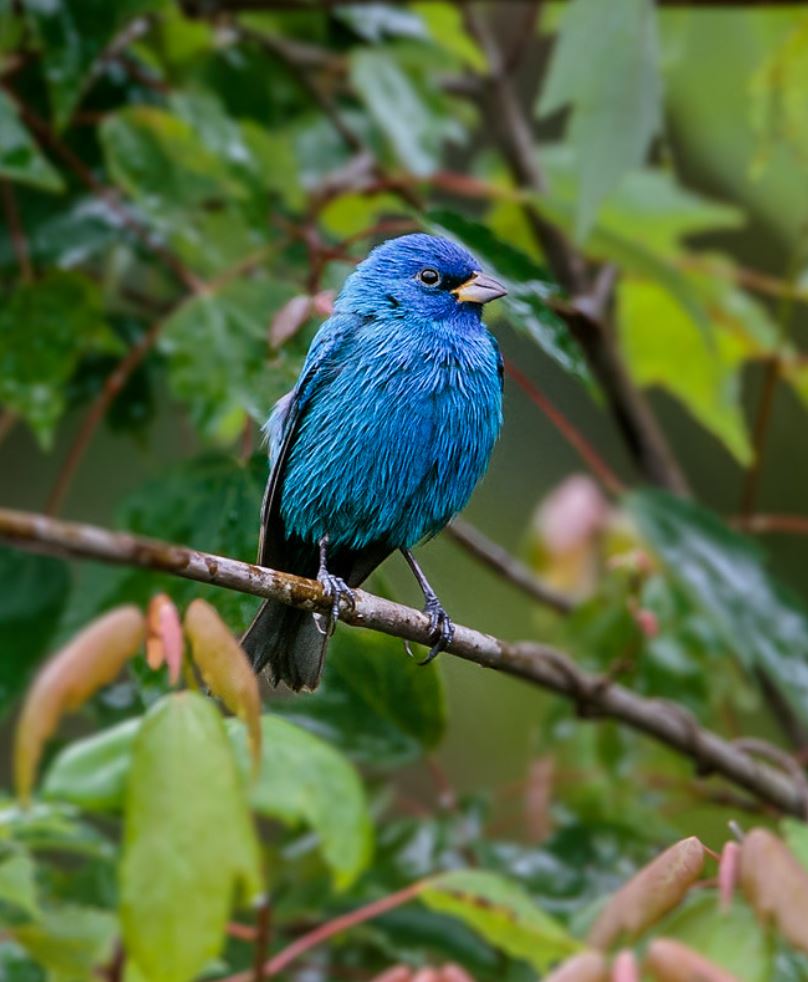
“Indigo Bunting” Cropped by Andy Morffew is licensed under CC BY 2.0.
The indigo bunting (Passerina cyanea) is a bird that has sky, to deep blue plumage, while his wings and tail are black with blue edges. Outside the breeding season, his plumage is duller. These birds are on average 4.5 inches or 11.4 cm in length with a wingspan of 7-9 inches (18 – 23 cm). They have a small, cone-shaped bill and grey or black legs and feet.
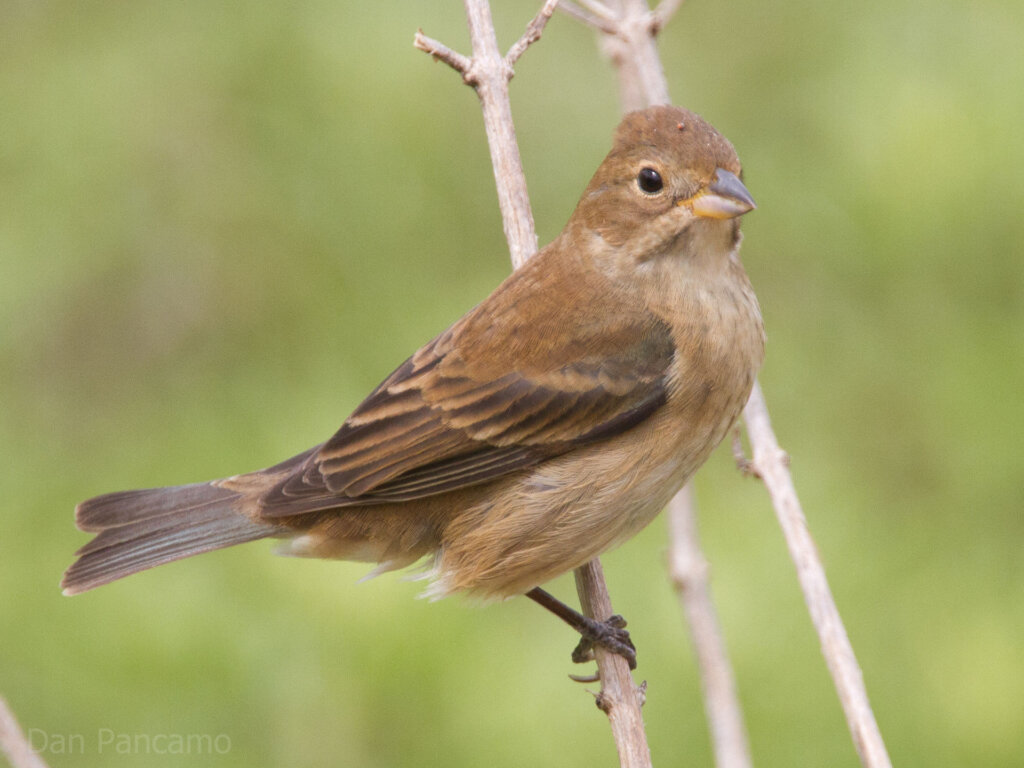
Photo Courtesy of Dan Pancamo / CC BY-SA 2.0
Females are mostly brown, darker on the upper plumage with a faintly streaked chest and a touch of blue on her tail and shoulders.
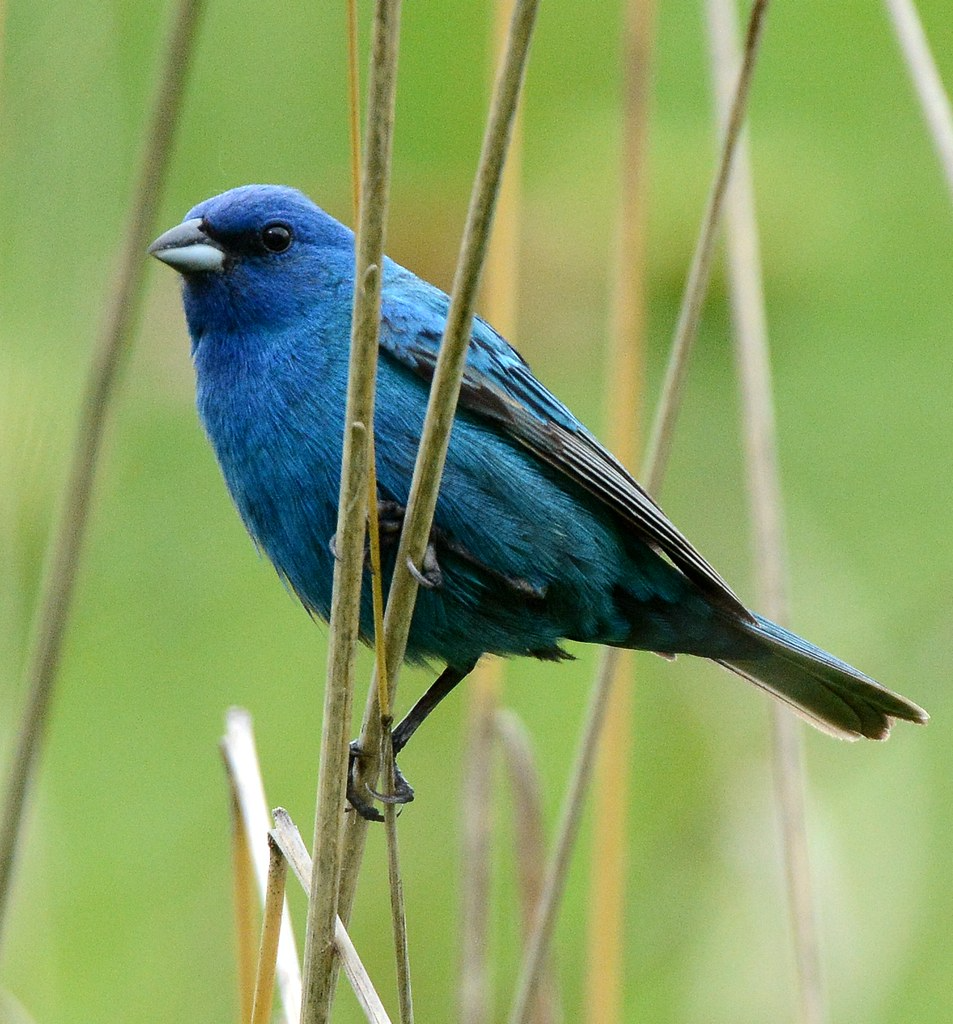
“Indigo Bunting” by USFWS Headquarters is licensed under CC BY 2.0.
The Indigo Bunting occurs mainly in eastern North America.
Though there are isolated populations found in some areas of the western United States.

“Indigo Bunting (male)” Cropped by ShenandoahNPS is marked with Public Domain Mark 1.0.
The Indigo Bunting prefers to live in brushy and weedy areas along farmland, orchards, woods, powerline and railroad openings, swamps, and streams. Males can often be heard singing from a high exposed perch.
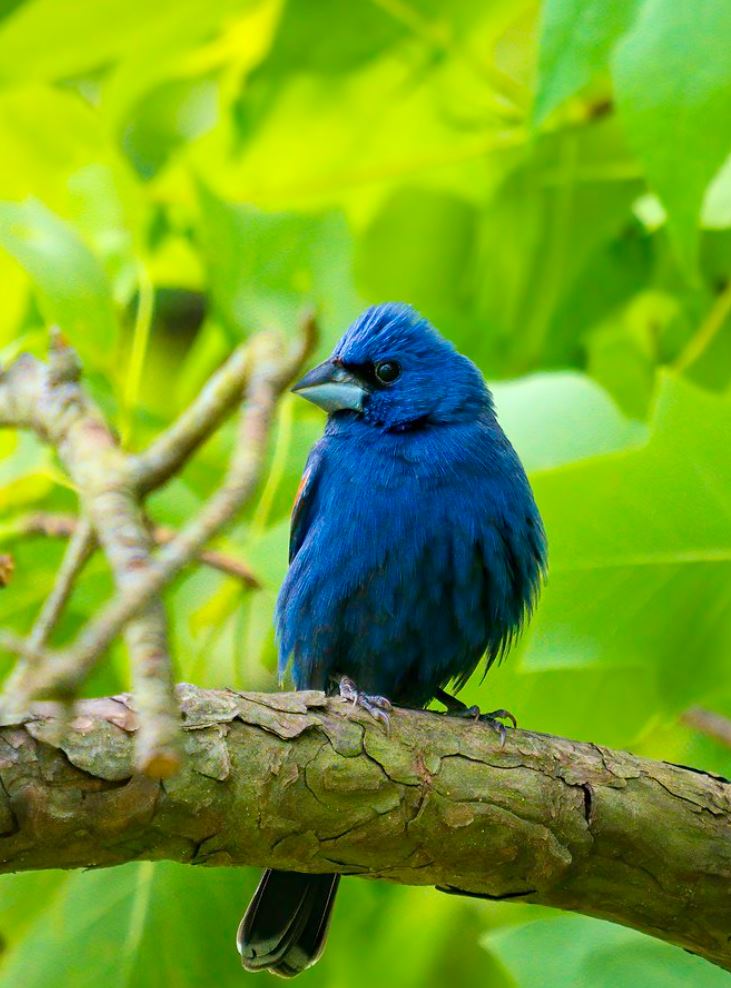
“Indigo bunting in Raleigh, NC” (cropped) by Sergey Galyonkin is licensed under CC BY-SA 2.0.
Indigo Buntings generally forage on the ground or in trees or shrubs hunting for insects and seeds. During the winter, they are often seen feeding in flocks.

“Indigo Bunting at Edger Waterfowl Production Area” by U.S. Fish and Wildlife Service – Midwest Region is marked with Public Domain Mark 1.0.
The male chooses and defends a breeding territory, while the female chooses a nest site and builds a nest using leaves, grass, and bark. This is usually built low in a dense shrub or small tree. These birds are monogamous but not always faithful to their partner. In the western part of their range, they often hybridize with the Lazuli Bunting. The female lays 1 to 5 eggs and incubates them for about 12 – 14 days. She alone feeds and cares for the chicks. The chicks fledge when they are 8-14 days old, but stay with the female for a few more weeks. The female may produce more than one brood a year in conditions that are conducive to her.
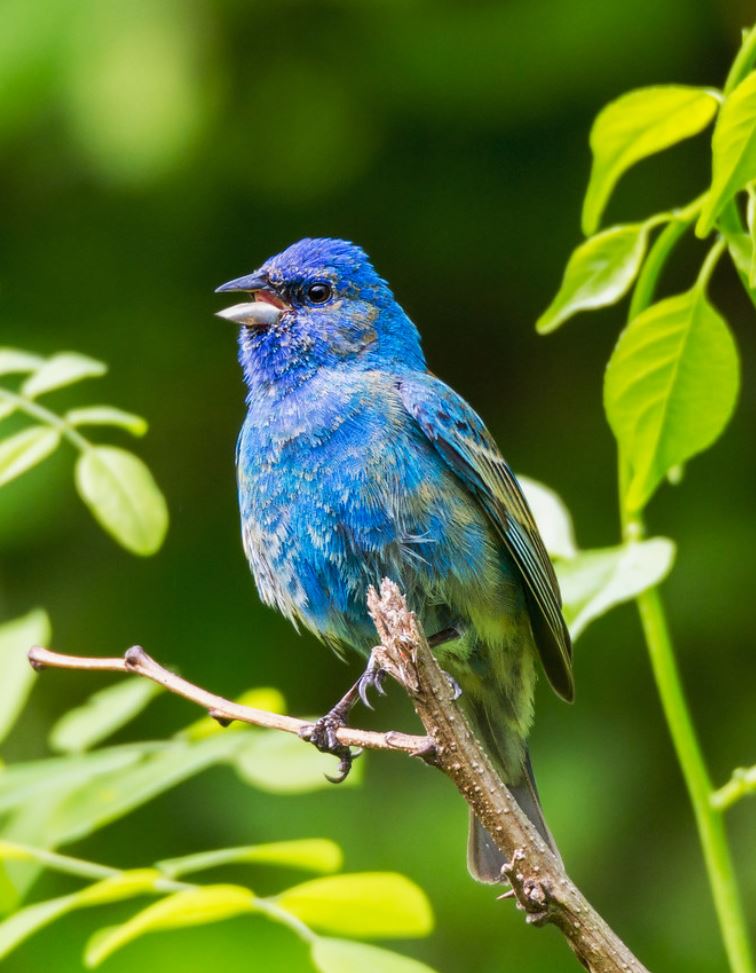
“Indigo Bunting (male)” by ShenandoahNPS is marked with Public Domain Mark 1.0.
The species is classified as being of least concern according to the International Union for Conservation of Nature.
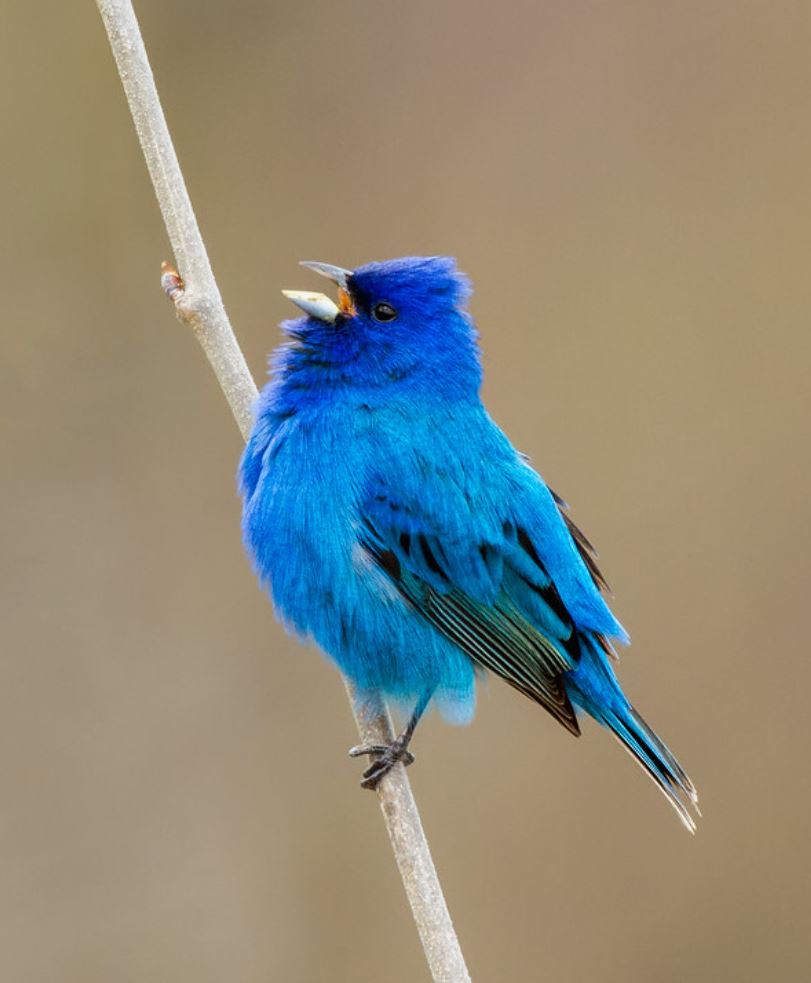
“Indigo Bunting (male)” (cropped) by ShenandoahNPS is marked with Public Domain Mark 1.0.
You can watch and listen to this bird right here below:




